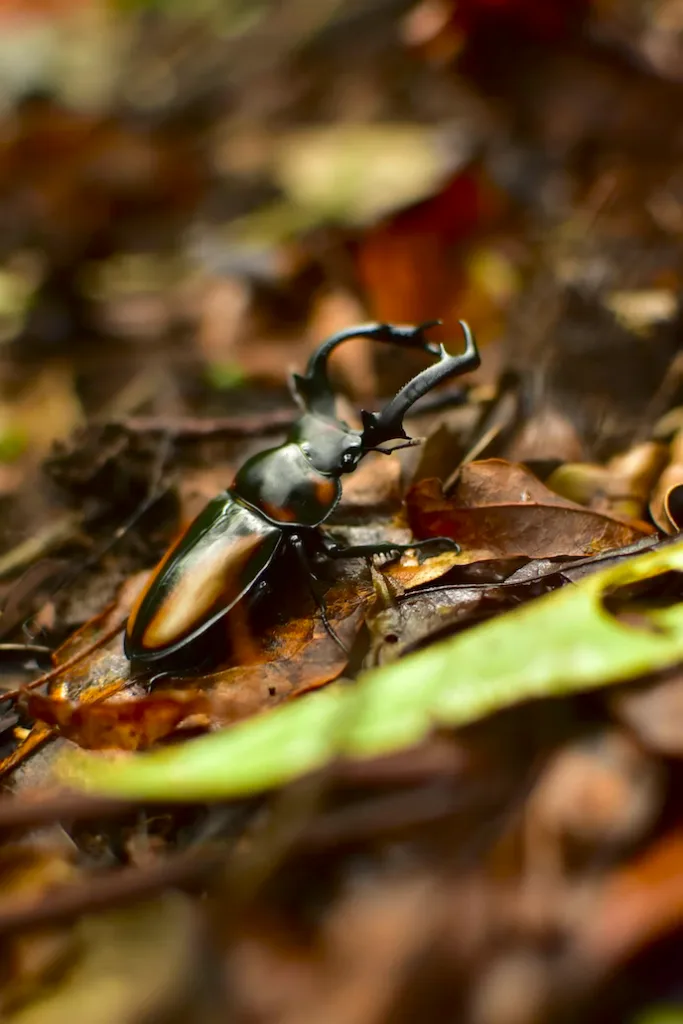From tiny ants to towering wasps, the insect kingdom is populated with many species – all capable of living in their unique habitats and carrying out specific tasks. But do you know what the most aggressive insect in the world is? The stag beetle!
Although insects may not get much love from humans because they can cause problems such as disease transmission, food loss, and general annoyance, what some people don’t realize is that many insects are incredibly powerful when it comes to strengths like hunting capabilities or being able to adapt quickly and survive harsh climates.
When it comes down to it, some types of insects can even be classified as aggressive species. From fire ants and killer bees defending their colonies against danger to bald-faced hornets on high alert for intruders near their nests, these bugs demonstrate skill in provocation when threatened!
Let’s explore which insects stand out among others by presenting an overview of the most aggressive insect species in the world today.
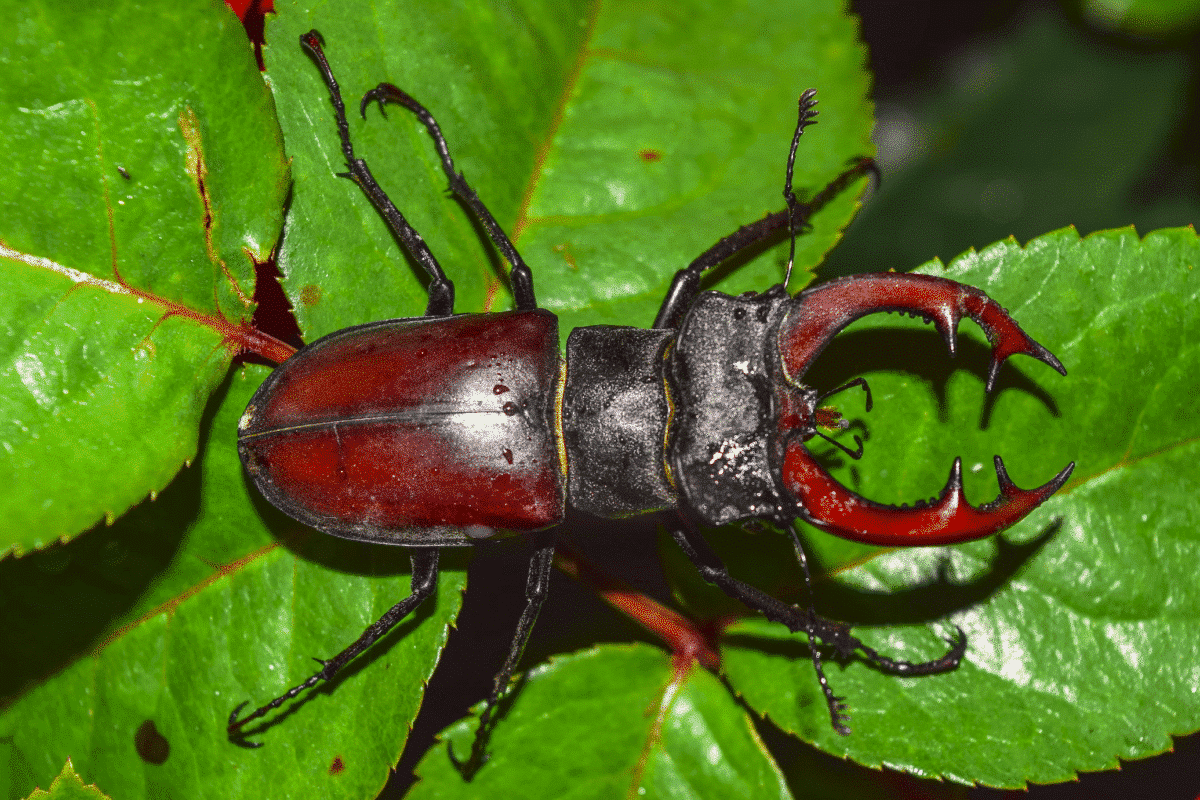
Want to jump ahead? Click below
Meet The Stag Beetle: The World’s Biggest And Most Ferocious Insect
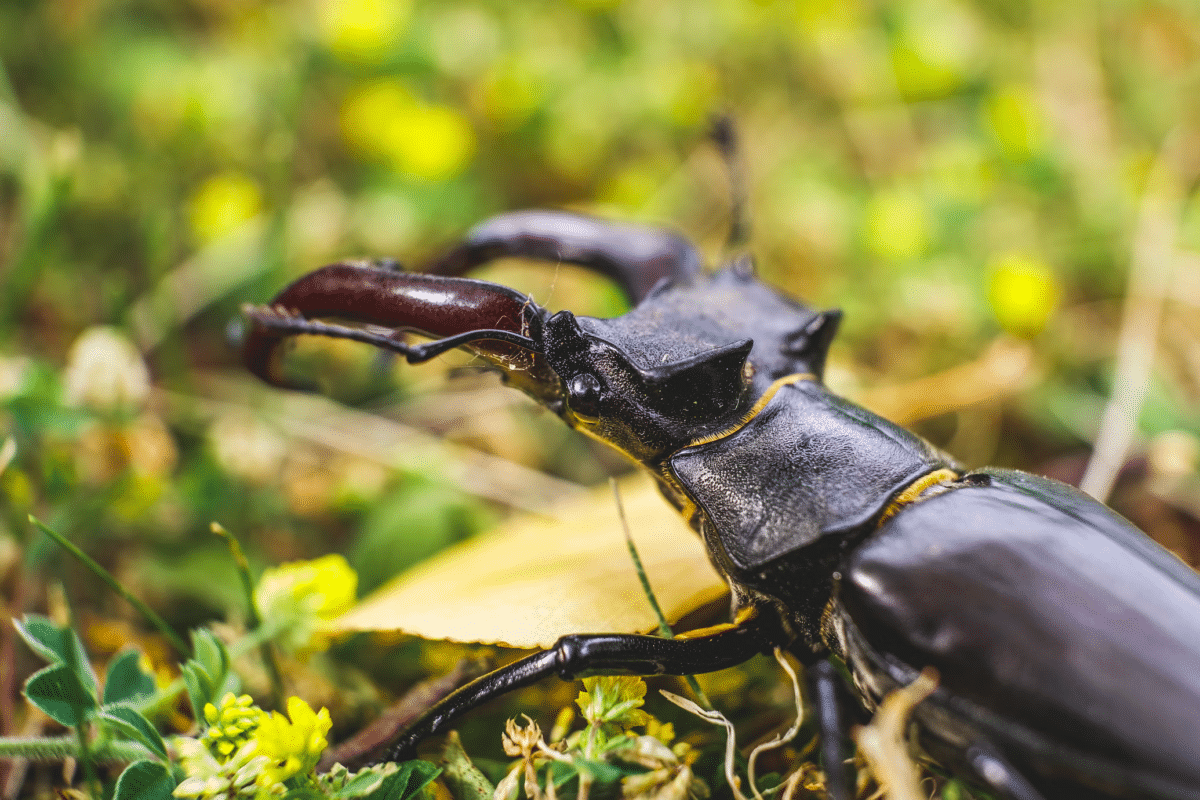
When we think of insects, stinging bees, pesky flies, and creeping-crawly spiders usually come to mind. However, one particular insect stands out from the rest – the stag beetle. Not only is it the largest and most aggressive insect in the world, but it is also a fascinating creature with unique physical features and behavioral patterns.
- Physical Features Of The Stag Beetle
The stag beetle is an intriguing insect that can grow up to 4.5 inches long, making it the biggest beetle in the world. Its large size, elongated jaws, and unmistakable antlers-like mandibles make it a striking and unique insect. The male stag beetle’s mandibles resemble the antlers of a deer, making it easily distinguishable from the female bug. The female mandibles are less pronounced and used primarily for digging and burrowing underground.
- Behavioral Traits Of The Stag Beetle
Despite its formidable appearance, the stag beetle is not aggressive toward humans and poses no threat to humans. However, when it comes to other stag beetles, it’s a different story. The male stag beetle is incredibly aggressive towards other male beetles, and they engage in intense wrestling matches. Their wrestling matches are not a fight to the death but a challenge to determine who is the superior beetle.
- Habitat
Stag beetles inhabit various regions, encompassing Europe, Asia, and North America. They prefer environments with trees, as they spend most of their lives in the woodlands, particularly decaying wood.
- Diet
Stag beetles are omnivorous, feeding on various things such as decaying wood, leaves, insects, and nectar from flowers. However, during the early years of their life, they rely mainly on wood, particularly wood that is decomposing.
- Threats
Despite their size and aggression towards other beetles, stag beetles are vulnerable to various threats. The most significant menace to their survival is the loss of their habitat.
With deforestation and urban development, stag beetles are losing their natural habitat, making it difficult to find food and lay eggs. In some countries, stag beetles are also hunted for their unique mandibles, which are used as a material for jewelry and souvenirs. The overcollection of stag beetles could lead to their extinction.
The stag beetle is an incredibly fascinating and unique insect. Despite its intimidating physical features and aggressive wrestling behavior, it poses no threat to humans. However, with their decline in numbers due to habitat loss, there is a need for more extraordinary conservation efforts to protect these magnificent creatures.
Reasons Why The Stag Beetle Is So Aggressive
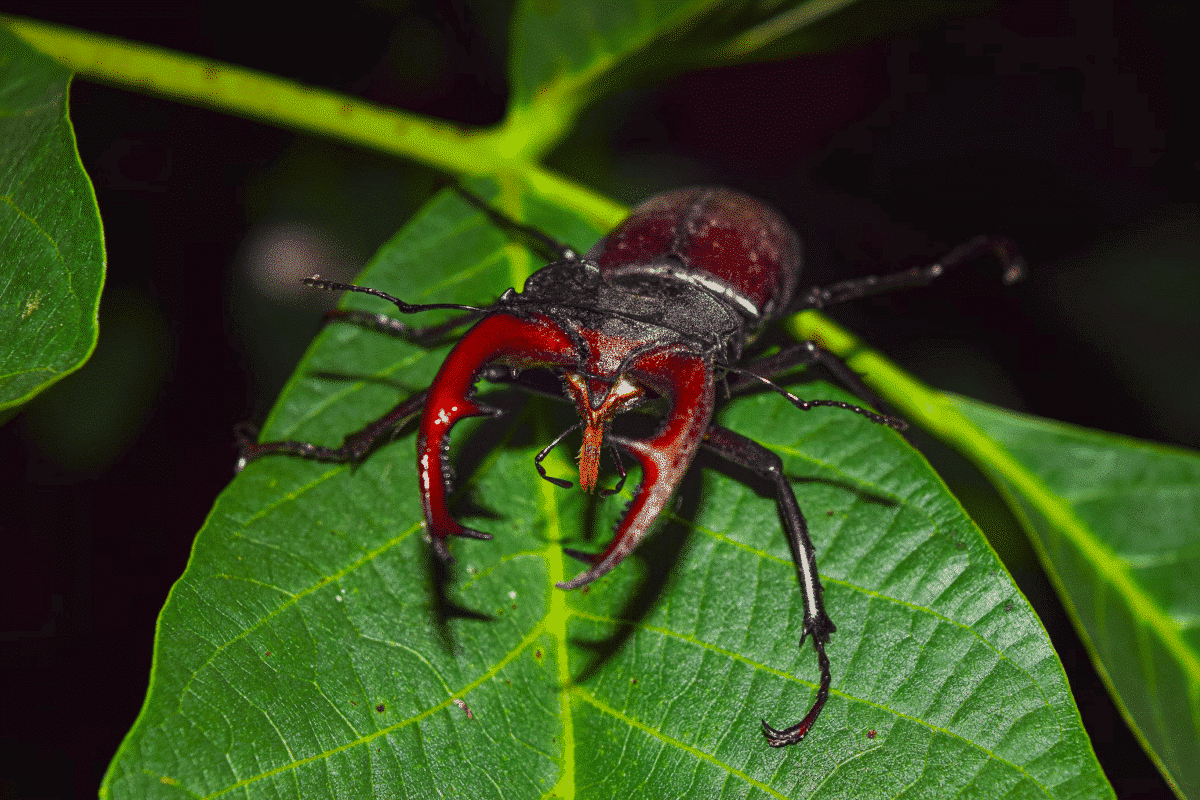
The Stag Beetle is a fascinating and unique insect known for its large and intimidating mandibles. These distinctive features make it one of the most interesting insects to study in the animal kingdom. Despite its relatively harmless nature, the Stag Beetle is known to be a highly aggressive species.
Here are some factors that contribute to the Stag Beetle’s aggression:
- Male stag beetles fight for territory and mating opportunities.
- They use large mandibles to battle other males and defend their territory.
- Stag beetles are not aggressive toward humans unless they feel threatened or provoked.
- During mating season, males may fight to the death to win over a female.
- Stag beetles have a short lifespan and must mate quickly, leading to male competition and aggression.
Habits Of The Stag Beetle
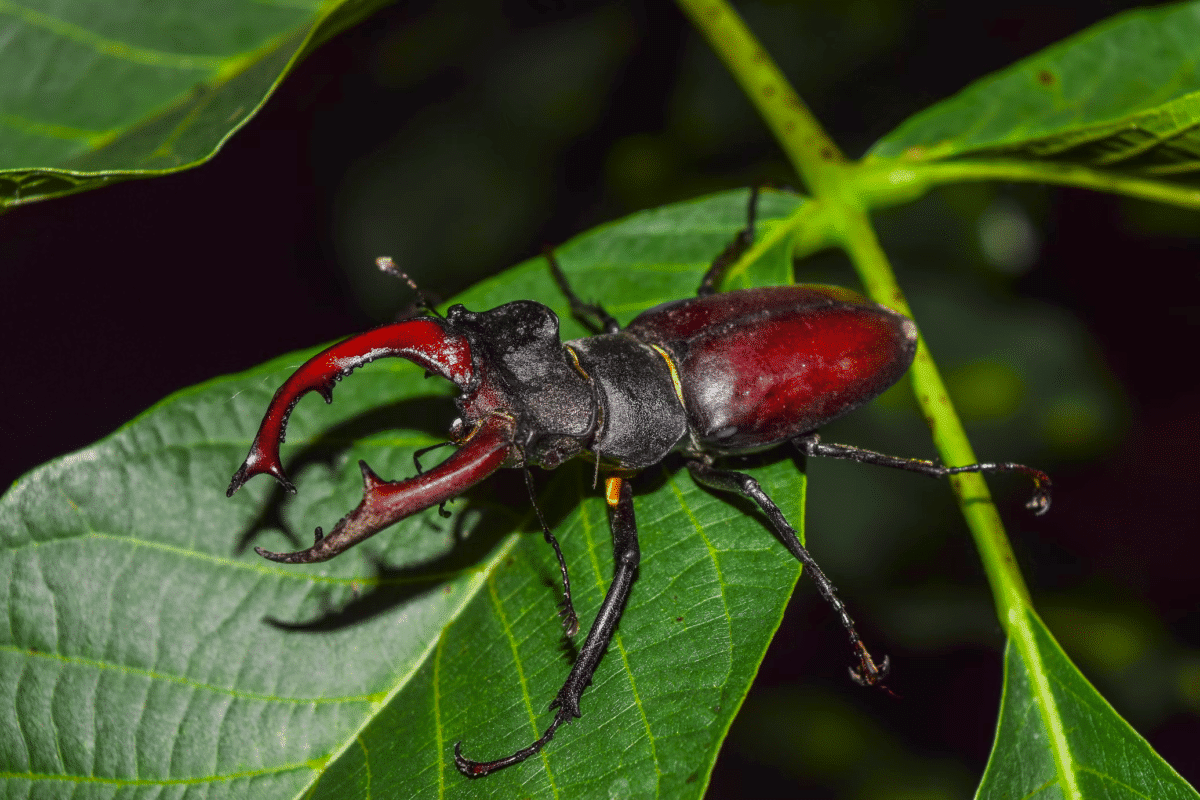
The Stag Beetle is a nocturnal insect that is more active at night. Its favorite habitats are places with trees, where it can hide during the daytime. They also prefer Oak Trees because of the moist and rotting wood, their primary food source. Interestingly, the Stag Beetle will also eat fruit, which is a departure from the norm for most beetles. Moisture is also essential for their sustenance, and they are commonly found in damp habitats.
Defensive Behavior Of The Stag Beetle
The Stag Beetle has developed an impressive set of defensive weapons to help protect itself against potential predators. Their mandibles serve as a primary weapon; they employ them when they sense danger. These mandibles are surprisingly strong and can cause significant damage to other insects, such as ants or beetles, and even humans. As a result, the Stag Beetle has no natural enemies or predators, as very few creatures can take on its power.
Habitats Of The Stag Beetle

The habitats of the Stag Beetle are quite varied, and this variation is one of the reasons why this creature is so aggressive. They can thrive in forests, fields, and even suburban regions, where they feed on other insects. While they generally do not exhibit aggression towards humans, they may attack when provoked or trapped.
The Stag Beetle is an exciting and unique insect with powerful defensive capabilities. Their habitats and habits are significant in their behavior, as they can be quite aggressive toward other insects and humans. These creatures use their mandibles as their primary weapon and are quite formidable in their strength. While the Stag Beetle may be intimidating, they are still a crucial part of the ecosystem and are worth studying better to understand its habits, habitats, and defensive behavior.
Tips On How To Avoid Being Bitten By A Stag Beetle
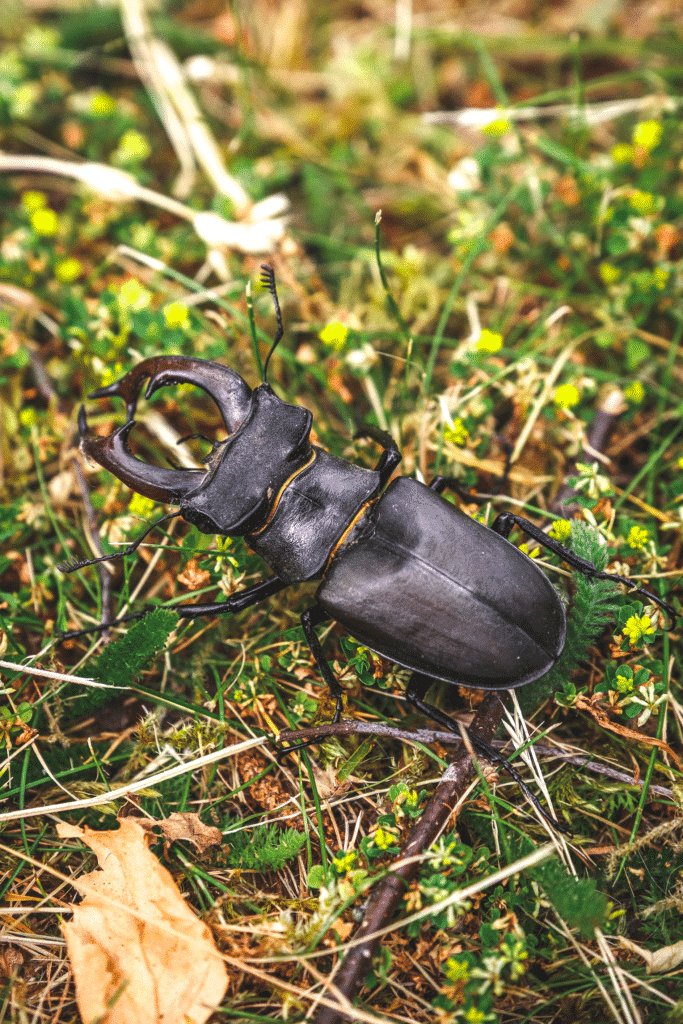
Stag Beetles may not be commonly known to be aggressive, but when they feel threatened, they can deliver a painful bite. Here are some tips on how to avoid being bitten by a Stag Beetle:
- Wear Gloves:
If you are handling wood or other materials where Stag Beetles may be present, it’s best to avoid accidentally touching them.
- Keep Your Distance:
If you come across a Stag Beetle, it’s best to keep your distance and avoid touching it.
- Don’t Provoke Them:
Stag Beetles are not naturally aggressive; they may bite to defend themselves if threatened. Avoid provoking them by touching or moving them.
Other Species Of Flies And Insects That Can Be Just As Aggressive
Stag Beetles are not the only insects that can be aggressive. Here are some other species of flies and insects that you should also be aware of:
- Horseflies:
These large flies are known for their painful bites and are often found near bodies of water.
- Yellow Jackets:
These wasps live in large colonies and can be aggressive when disturbing their nest.
- Ticks:
These tiny parasites can transmit diseases such as Lyme disease and can be found in wooded areas and tall grass.
Stag Beetle’s Natural Predators And How To Leverage Them To Your Benefit
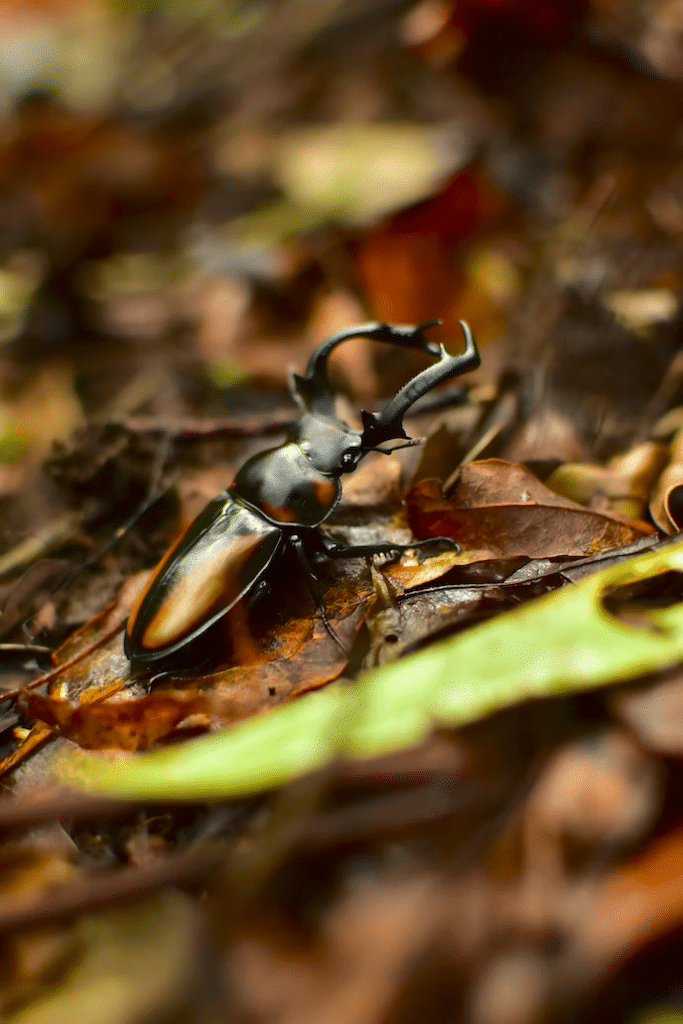
Even though Stag Beetles may seem scary, they have natural predators that can help control their population.
Here are some natural predators of the Stag Beetle and how you can use them to your advantage:
- Birds:
Many species of birds, such as woodpeckers and jays, feed on Stag Beetles. Encouraging birds to visit your garden can help control the Stag Beetle population.
- Mammals:
Moles, hedgehogs, and shrews are all-natural predators of the Stag Beetle. By encouraging these animals to visit your garden, you can help control the Stag Beetle population.
- Other insects:
Some species of beetles and ants also prey on Stag Beetles. Encouraging these insects to live in your garden can help control the Stag Beetle population naturally.
Check out STAG BEETLE – THE MOST EXPENSIVE INSECT IN THE WORLD.
Key Points
| The stag beetle is an intimidating-looking insect that can grow up to 4.5 inches long, making it the biggest beetle in the world. |
| Despite its formidable appearance, the stag beetle is not aggressive toward humans and poses no threat to humans. |
| Stag beetles inhabit various regions, encompassing Europe, Asia, and North America. |
| Despite their size and aggression towards other beetles, stag beetles are vulnerable to various threats. The most significant menace to their survival is the loss of their habitat. |
Wrapping Up with Most Aggressive Insect
The Stag Beetle is a fascinating and intricate insect with distinctive features and aggressive tendencies, making it interesting for naturalists. Appreciate this unique creature if you spot it in its natural environment. Further investigation and studies can expand our knowledge of these mysterious insects and help protect them from potential threats. Consider getting involved in conservation efforts through dedicated organizations.
Thanks for following along with me! I hope you enjoyed reading about this angry little bug. Next are, Do Ladybugs Bite?, What do dragonflies eat? and Biggest flock of migrating birds ever recorded.
- Watch Rare Encounter: The Largest King Cobra in Action in Thailand - April 26, 2024
- Selkirk Rex Cat - April 25, 2024
- Bald Eagle Family Expand Their Nest In California - April 24, 2024

